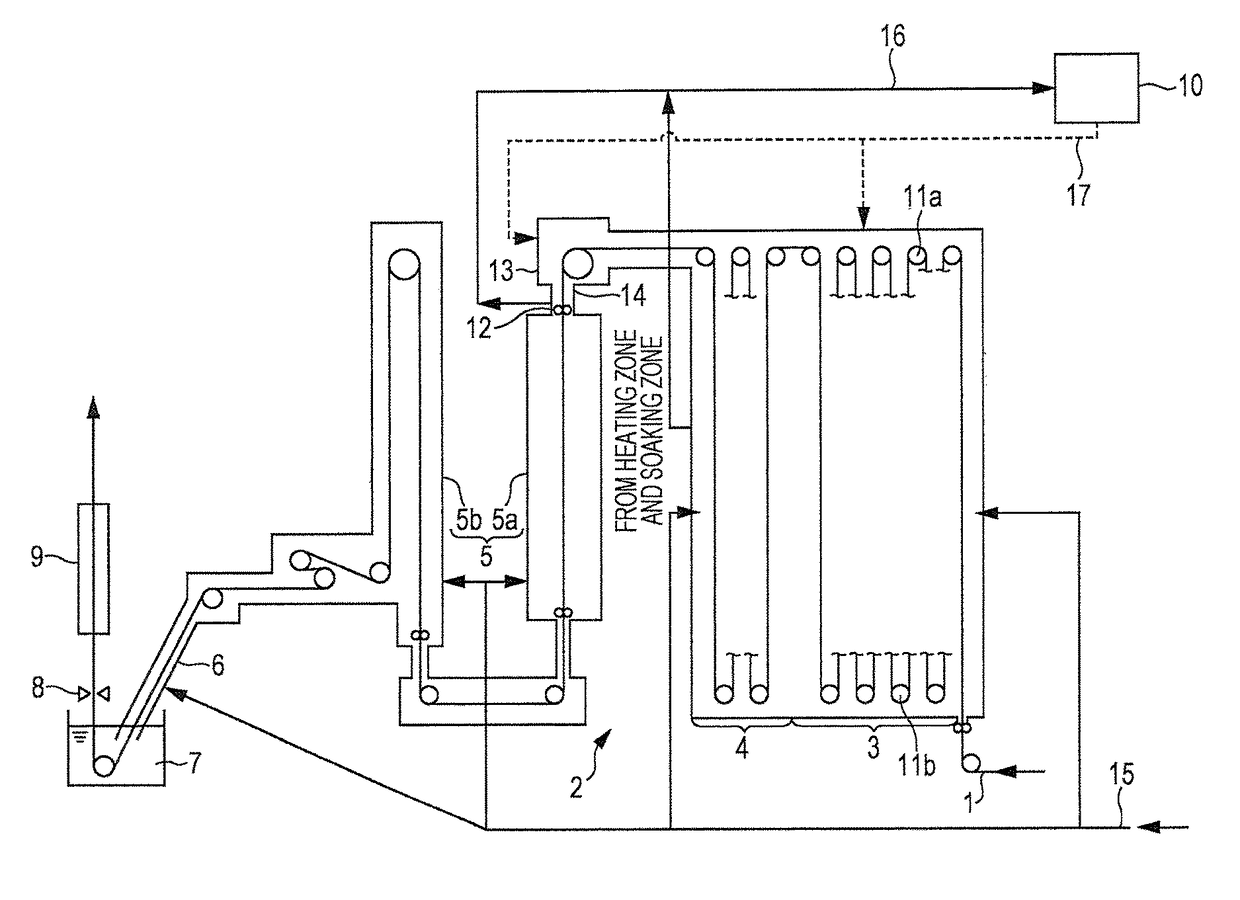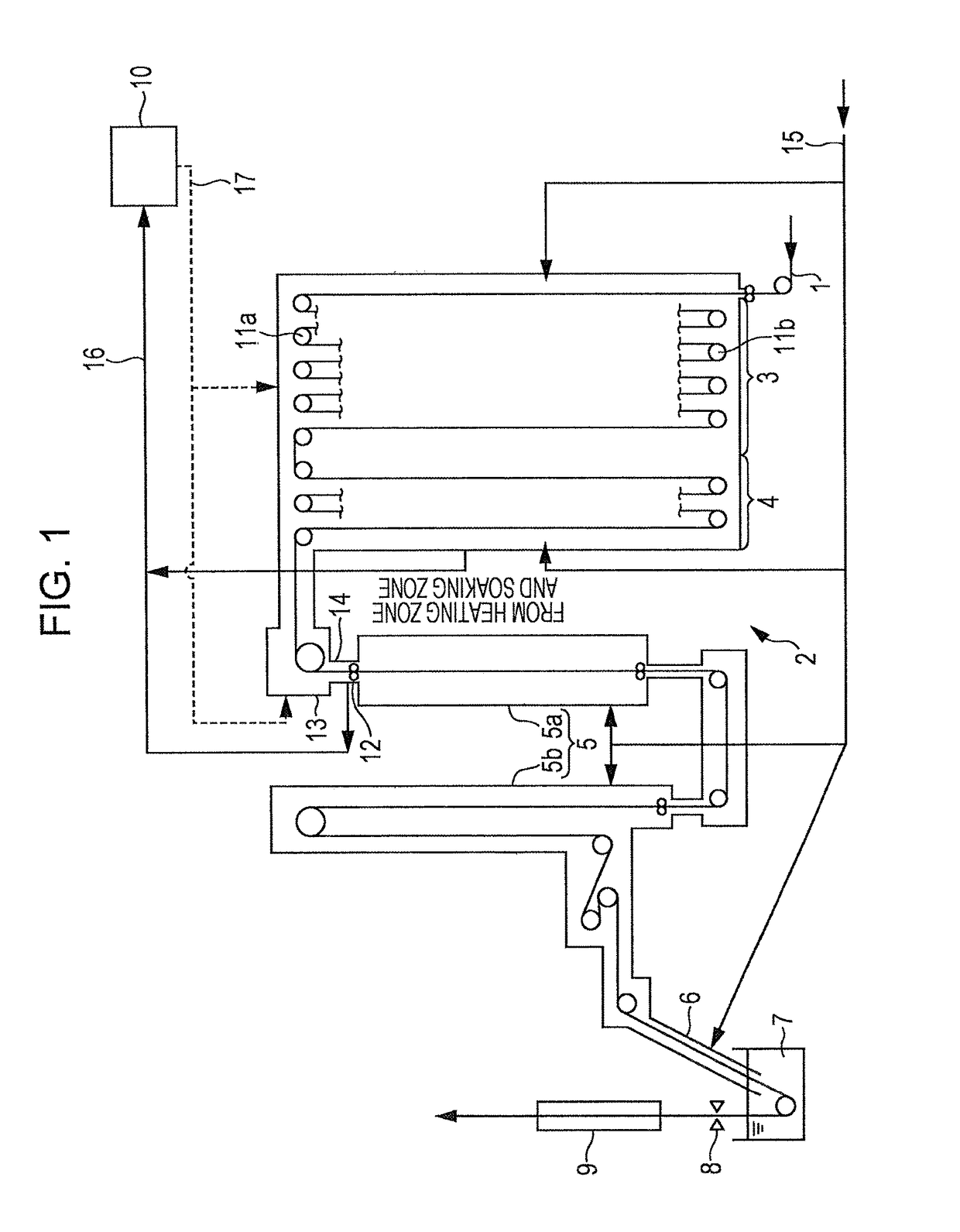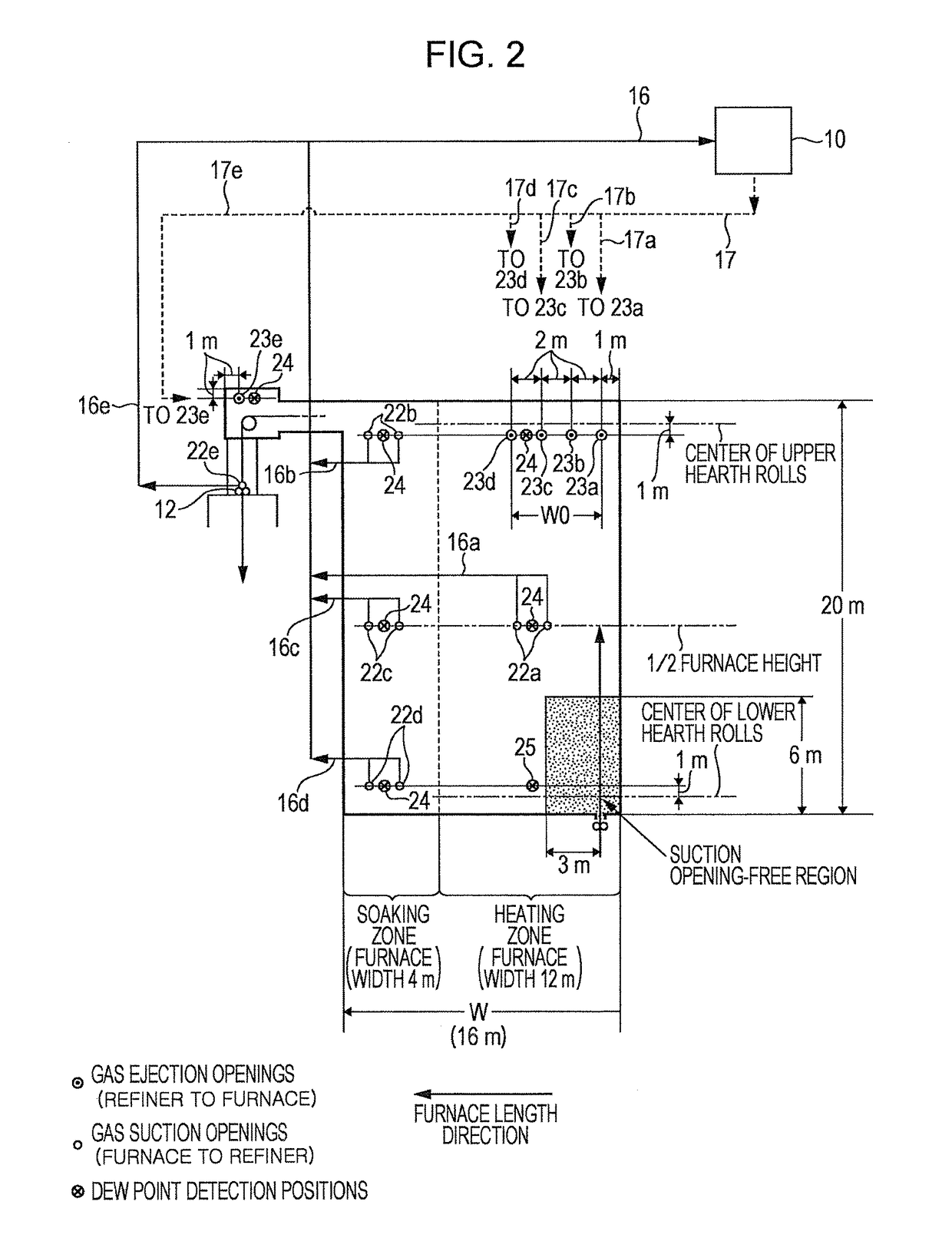Continuous annealing furnace and continuous annealing method for steel strips
a technology of continuous annealing and furnace, which is applied in the direction of furnaces, heat treatment equipment, lighting and heating equipment, etc., can solve the problems of long time to reduce the concentration of water and oxygen in the furnace atmosphere to the prescribed levels, reduce productivity, and deteriorate the appearance or chemical conversion property such as phosphatability, so as to prevent a decrease in productivity and shorten the period of time , the effect of stable production of steel strips
- Summary
- Abstract
- Description
- Claims
- Application Information
AI Technical Summary
Benefits of technology
Problems solved by technology
Method used
Image
Examples
example 1
[0085]A dew point measurement test was carried out in an ART type (all radiant type) CGL illustrated in FIG. 1 (annealing furnace length: 400 m, furnace height in heating zone and soaking zone: 23 m, furnace width in heating zone: 12 m, furnace width in soaking zone: 4 m).
[0086]The furnace had openings through which the atmosphere gas from outside of the furnace is supplied at a total of six locations in the soaking zone, namely, at three locations arranged in the furnace length direction both at 1 m and 10 m above the hearth bottom on the drive side, and at a total of sixteen locations in the heating zone, namely, at eight locations arranged in the furnace length direction both at 1 m and 10 m above the hearth on the drive side. The dew point of the atmosphere gas to be supplied was −60° C.
[0087]Furnace-to-refiner gas suction openings and refiner-to-furnace gas ejection openings were disposed as illustrated in FIG. 2. Specifically, the gas suction openings were disposed in a throat...
example 2
[0095]Trends of dew point decrease were studied with the ART type (all radiant type) CGL illustrated in FIG. 1 which was used in EXAMPLE 1.
[0096]The conditions in a conventional method (without the use of the refiner) were such that the atmosphere gas supplied into the furnace had a composition including 8 vol % H2 and the balance of N2 and inevitable impurities (dew point −60° C.), the rate of gas supply to the cooling zone and subsequent zones was 300 Nm3 / hr, the rate of gas supply to the soaking zone was 100 Nm3 / hr, the rate of gas supply to the heating zone was 450 Nm3 / hr, the steel strips had a sheet thickness of 0.8 to 1.2 mm and a sheet width of 950 to 1000 mm (the alloy components in the steel were the same as in Table 1), the annealing temperature was 800° C., and the line speed was 100 to 120 mpm.
[0097]The conditions in the inventive method were the same as the above conditions and further included the use of the refiner. The initial state of dew point was similar to the b...
PUM
| Property | Measurement | Unit |
|---|---|---|
| length | aaaaa | aaaaa |
| length | aaaaa | aaaaa |
| temperature | aaaaa | aaaaa |
Abstract
Description
Claims
Application Information
 Login to View More
Login to View More - R&D
- Intellectual Property
- Life Sciences
- Materials
- Tech Scout
- Unparalleled Data Quality
- Higher Quality Content
- 60% Fewer Hallucinations
Browse by: Latest US Patents, China's latest patents, Technical Efficacy Thesaurus, Application Domain, Technology Topic, Popular Technical Reports.
© 2025 PatSnap. All rights reserved.Legal|Privacy policy|Modern Slavery Act Transparency Statement|Sitemap|About US| Contact US: help@patsnap.com



